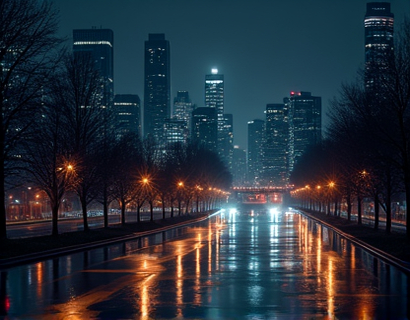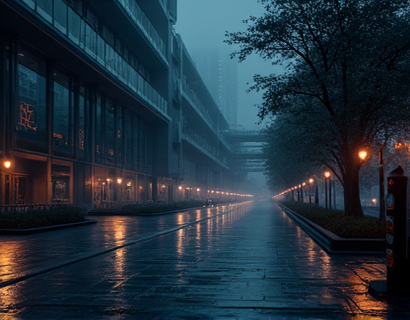Unveiling the Ancient Heritage and Local Wonders of the Indus Valley
The Indus Valley, a cradle of one of the world's oldest civilizations, beckons travelers and cultural enthusiasts with its rich tapestry of history, architecture, and local traditions. This comprehensive guide delves into the heart of this ancient region, offering an immersive journey through its historical landmarks, practical travel tips, and hidden gems. Whether you are a history buff or a curious traveler, this guide promises to enrich your understanding and appreciation of the Indus Valley's unique cultural heritage.
Historical Significance of the Indus Valley
The Indus Valley Civilization, dating back to around 3300 BCE, is one of the oldest urban civilizations in the world. It flourished in the northwestern regions of South Asia, encompassing parts of present-day Pakistan and northwestern India. The civilization is renowned for its advanced urban planning, sophisticated water management systems, and intricate craftsmanship. The cities of Harappa and Mohenjo-Daro stand as testament to the ingenuity and organizational skills of the people who inhabited this region.
The Indus Valley Civilization was characterized by its grid-based city layouts, standardized weights and measures, and a script that remains undeciphered. The people were skilled in metallurgy, pottery, and textile production. Their trade networks extended to Mesopotamia, indicating a high level of economic and cultural exchange. The decline of the civilization around 1300 BCE, possibly due to environmental changes and invasions, left behind a legacy that continues to fascinate scholars and visitors alike.
Exploring Historical Landmarks
Visitors to the Indus Valley can explore several key historical sites that offer a glimpse into the lives of its ancient inhabitants. Mohenjo-Daro, one of the most famous sites, showcases well-preserved ruins including the Great Bath, a sophisticated public bathing facility, and the Citadel, a fortified area that likely served administrative purposes. The city's drainage system and standardized brick sizes demonstrate the advanced engineering skills of the Indus people.
Harappa, another significant site, provides insights into the daily life of the Indus people. The site includes a large public bath, granaries, and residential areas with well-planned streets. The discovery of seals and artifacts here suggests a complex social and economic structure. The Rakhigarhi archaeological site, though less visited, offers extensive excavations that reveal the early phases of the Indus civilization.
The ancient city of Dholavira, located in Gujarat, is known for its unique water conservation systems and intricate carvings. The site's layout, with its fortified walls and sophisticated drainage, highlights the advanced urban planning of the Indus people. Each of these sites offers guided tours and informational plaques, ensuring visitors can fully appreciate the historical significance and architectural marvels.
Cultural Heritage and Local Traditions
Beyond the archaeological sites, the Indus Valley region is rich in cultural heritage and local traditions. The area is home to a diverse population with a blend of ethnicities and languages. Visitors can experience the vibrant local culture through festivals, cuisine, and traditional crafts. The Bhandara Festival, celebrated in the Sindh province, honors the region's agricultural heritage with music, dance, and local delicacies.
Traditional crafts such as block printing, embroidery, and pottery continue to thrive, reflecting the skill and creativity of local artisans. The intricate patterns and designs found in these crafts often draw inspiration from the ancient Indus motifs. Visitors can witness these crafts being made at local markets and workshops, providing a hands-on experience of the region's cultural continuity.
The cuisine of the Indus Valley is a delightful fusion of flavors, influenced by its geographical location and historical trade routes. Dishes like biryani, kebabs, and various types of flatbreads are staples in the local diet. The use of spices and herbs in cooking is reminiscent of the ancient trade in spices and aromatics. Food tours and cooking classes offer a delicious way to immerse oneself in the local culture.
Practical Travel Tips
Planning a trip to the Indus Valley requires some preparation to ensure a smooth and enriching experience. Travelers should consider the best time to visit, which is typically from October to March when the weather is mild. Summer months can be extremely hot, while winters can be cool, especially in the evenings.
Accommodation options range from luxury hotels in urban areas to eco-friendly lodges near archaeological sites. Booking in advance is recommended, especially during peak travel seasons. Local guides are highly recommended for visiting historical sites, as they can provide valuable insights and ensure safety.
Transportation within the region is relatively convenient, with regular bus and train services connecting major cities. For those preferring a more adventurous journey, renting a car or joining a guided tour can offer flexibility and deeper exploration. It's advisable to carry lightweight clothing, sunscreen, and a reusable water bottle to stay comfortable during the trip.
Local Attractions and Hidden Gems
While the major historical sites are must-visits, the Indus Valley offers numerous local attractions and hidden gems that are often overlooked by tourists. The Cholistan Desert, spanning parts of Pakistan and India, is a unique ecosystem with dunes and wildlife. Visitors can experience camel rides and visit local villages to learn about the nomadic lifestyle.
The Derawer Caves in Sindh, a lesser-known site, feature ancient rock carvings and inscriptions that provide a glimpse into the region's early history. The Rohri Museum in Sukkur houses an extensive collection of artifacts from the Indus Valley Civilization, including pottery, tools, and jewelry. The museum offers a comprehensive overview of the region's history and culture.
The town of Thatta, once the capital of the Sindh Sultanate, is known for its historical mosques and the Shah Jahan Mosque, a fine example of Mughal architecture. The nearby Indus River, which played a crucial role in the civilization's development, offers opportunities for boat rides and fishing. Local markets in Thatta sell handmade crafts and souvenirs, providing a chance to support local artisans.
Essential Resources for Travelers
For travelers planning to explore the Indus Valley, several resources can enhance the experience. Guidebooks such as "Lost Cities of the Indus" by Jonathan Mark Kenoyer and "The Archaeology of Ancient India" by Jonathan Mark Kenoyer and Peter Biely offer in-depth information on the region's history and archaeology.
Online platforms like UNESCO's World Heritage List provide detailed descriptions and images of the Indus Valley sites, helping visitors prepare for their trip. Travel forums and blogs can offer first-hand accounts and tips from fellow travelers. Local tourism offices and visitor centers in major cities provide maps, brochures, and practical advice.
Mobile apps such as Google Maps and local transportation apps can assist with navigation, while currency exchange and weather apps ensure travelers are well-prepared. Downloading offline maps of the region can be particularly useful in areas with limited internet connectivity.
Conclusion
The Indus Valley is a treasure trove of ancient history, cultural richness, and natural beauty. By exploring its historical landmarks, immersing in local traditions, and following practical travel tips, visitors can have a truly unforgettable journey. This guide aims to equip travelers with the knowledge and resources needed to fully appreciate and enjoy the wonders of the Indus Valley. Whether you are tracing the steps of an ancient civilization or discovering the warmth of local hospitality, the Indus Valley promises a journey through time and culture.










































